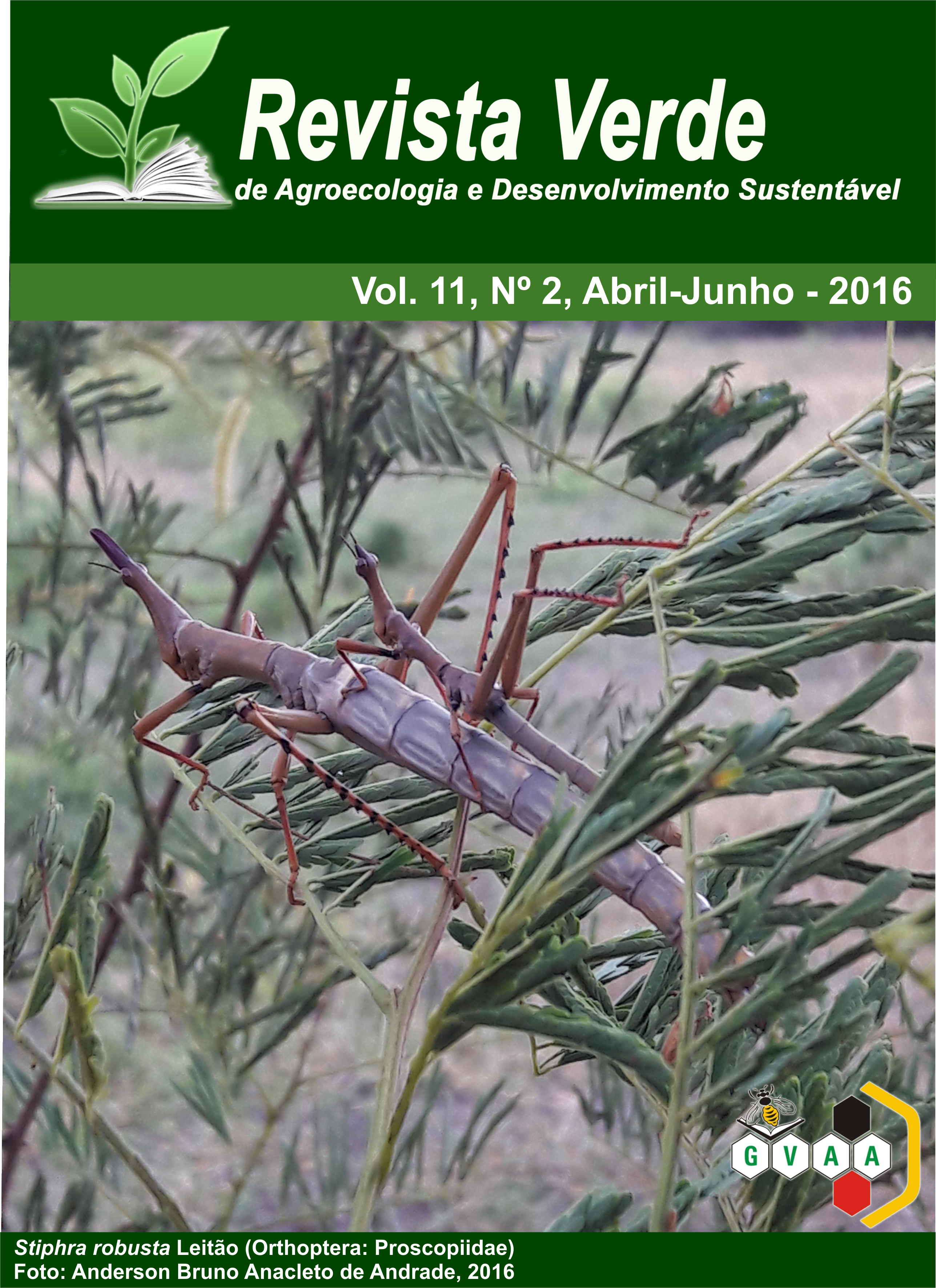Artrópodes edáficos em fragmentos de floresta ombrófila aberta na Paraíba, Brasil
DOI:
https://doi.org/10.18378/rvads.v11i2.4212Keywords:
Mesofauna, Macrofauna, Qualidade biológica, Solos florestais.Abstract
Os organismos do solo são componentes ativos nos sítios edáficos e desempenham importantes funções no processo de ciclagem de nutrientes. Objetivou-se avaliar a diversidade da macrofauna e a distribuição vertical da mesofauna em dois fragmentos de Floresta Ombrófila Aberta que ainda sofrem intervenção antrópica, apesar do caráter de conservação. A mesofauna foi amostrada com o uso de anéis metálicos com dimensões de 5,2 cm de altura e 4,8 cm de diâmetro, introduzidos ao solo+serapilheira, com cinco repetições, totalizando 20 amostras. Em seguida os organismos foram extraídos em aparato de Berlese-Tullgren modificado. Para a amostragem da macrofauna nas áreas experimentais foi utilizado o método de monólitos de solo do Programa “Tropical Soil Biology and Fertility”. As amostras foram coletadas de forma aleatória, em duas profundidades: 0-5 cm e 5-10 cm, com 10 repetições cada, totalizando 20 amostras em cada área, sendo estas armazenadas em sacos plásticos e encaminhado ao laboratório. Verificou-se que a população de organismos da mesofauna foi superior no fragmento da Mata de Pau Ferro com destaque para a ordem Acarina que registrou uma frequência relativa de 80%. Diante dos resultados, não foi constatada a diferença em profundidade da comunidade da mesofauna nos dois fragmentos avaliados. A ordem Acarina foi a mais abundante na MPF. A intervenção antrópica no fragmento do CCA promoveu alteração no ambiente resultam em um aumento na abundância de formigas.
Arthropods edaphic in open rain forest fragments in Paraiba, Brazil
Abstract: Soil organisms are active components in edaphic sites and play important roles in nutrient cycling processes. The study objective is to evaluate the diversity of macrofauna and the vertical distribution of mesofauna in two Open rain forest fragments that still suffer human intervention, despite the conservation of nature. The mesofauna was sampled with the use of metal rings with dimensions of 5.2 cm height and 4.8 cm diameter, introduced into the soil + litter with five replications totaling 20 samples. Then the bodies were extracted in apparatus Berlese-Tullgren modified. For the sampling of macrofauna in the experimental areas was used soil monoliths method of the "Tropical Soil Biology and Fertility." The samples were collected randomly in two depths: 0-5 cm and 5-10 cm, with 10 repetitions each, totaling 20 samples in each area, which are stored in plastic bags and sent to the laboratory. It was found that the population of mesofauna organisms was higher in the fragment of Pau Ferro Mata highlighting the order Acarina which registered a relative frequency of 80%. Given the results, it found no difference in the depth of the mesofauna community both two fragments. The order Acarina was the most abundant in the MPF. The human intervention in the CCA fragment promoted change in the environment result in an increase in the abundance of ants.











